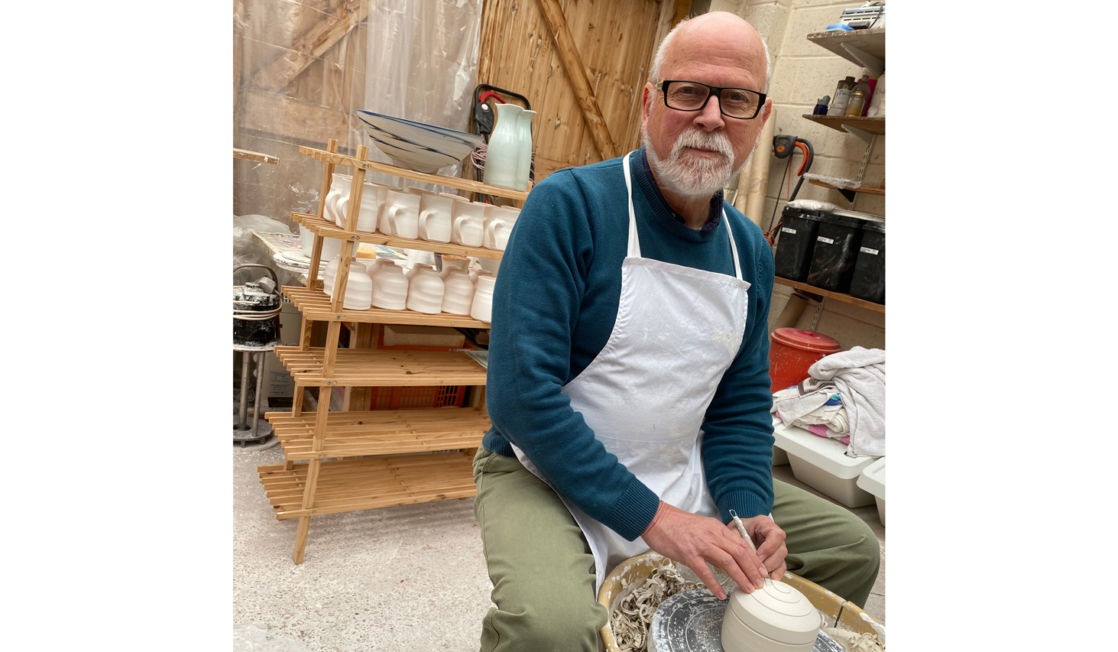
“When you are working in clay you have to adopt a very calm and focused approach combined with patience. In my life I feel that this practice has helped me achieve many things and understand things outside my normal day. What will be will be without fuss. This approach has been very beneficial in my time teaching. “
CONTEMPORARY CERAMICS: Why do you do what you do?
JOHN DAWSON: I have always been a creative person along with the love of music and rhythm. Throwing gives me that combination.
CC: How did you first get involved with working with clay?
JD: It goes back many years when I was still attending school. I saw a neighbour throwing on an old Leach kick wheel and was completely taken by this wonderful sense of movement. It seemed like putty in your hands although it was some years later that I was able to get my hands on a wheel and learn to throw.
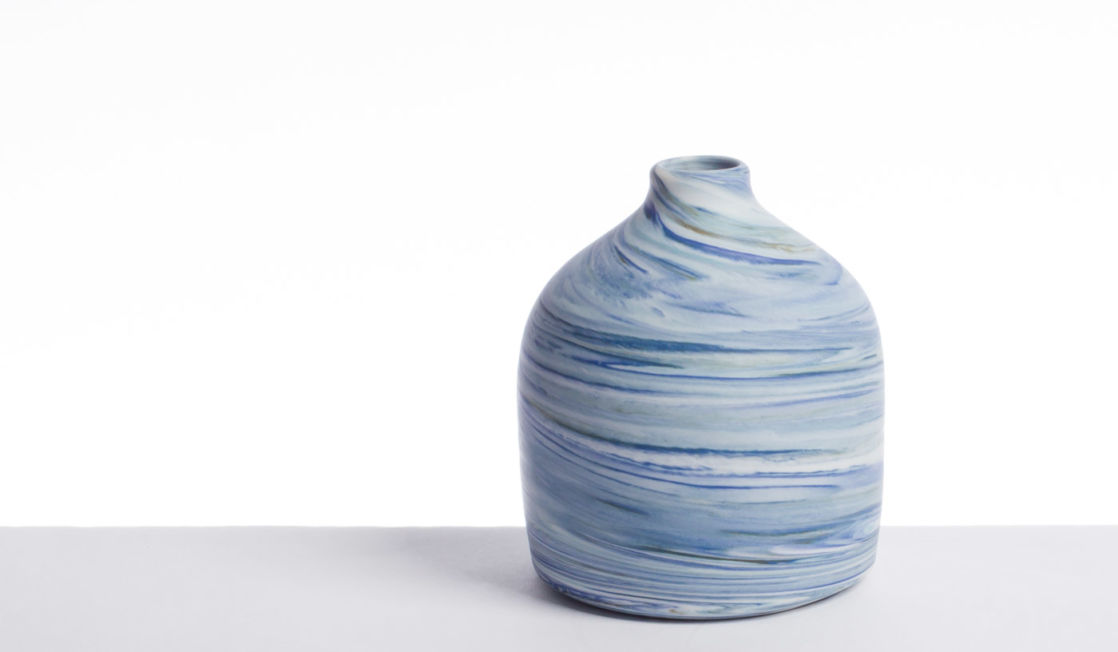
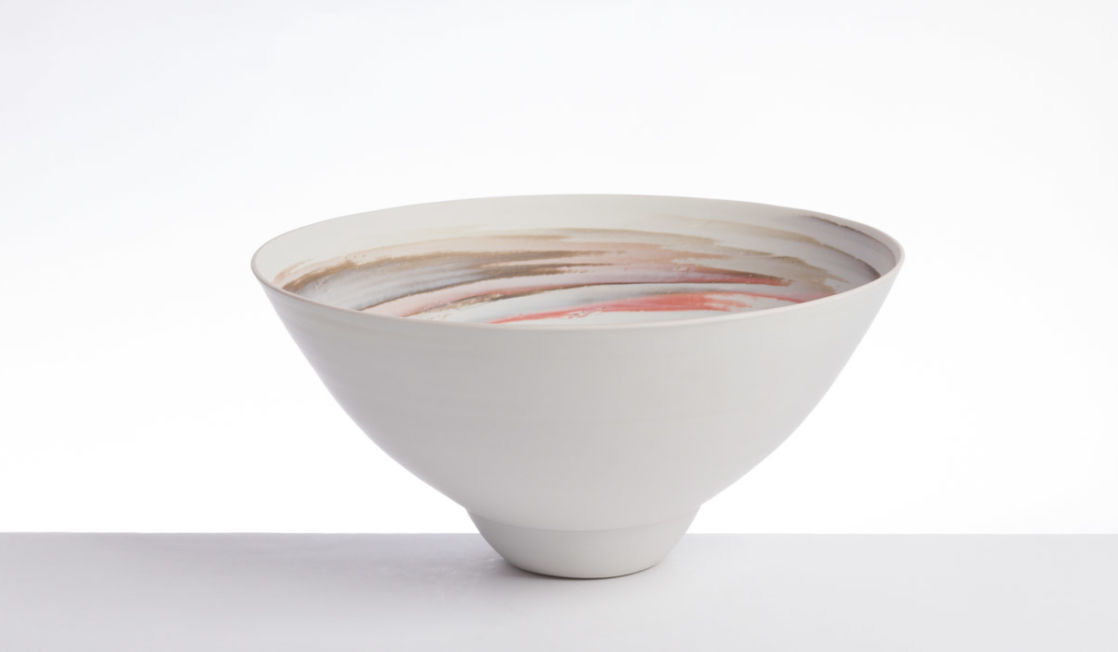
CC: What is your relationship with colour?
JD: I am normally attracted to fairly muted colours i.e. Celadons. For me a celadon glaze gives the idea of a type of none fussy decoration, as with my altered forms, celadon accentuates these marks.
Working with agateware has given me the chance to play with colour in various combinations. I like to work with at least a combination of three colours. Two dark and one light or two light and one dark. This way, I feel, they play off one another. There is a sense of control when the pots are finally sanded as sometimes the colour is hiding just under the surface, so the more you sand the more you can reveal. I still like the minimal and muted colour effect by using not too bright colours.
CC: What images keep you company in the space where you work?
JD: My studio is at the bottom of the gardens that looks back up to the house. I have made a porcelain bird feeder and bird bath for the garden and this, along with the trees and plants in the garden is the images that keep me company and entertained while I’m working. Even when it’s raining.
I always have the radio on playing classical music.
CC: How do you work?
JD: I like to make work that people can use, whether it is a bowl or some other domestic piece. I tend to work in blocks making a run of pieces as nothing gives more satisfaction than seeing the shelves full of similar work. I like to think that my work is decorative but functional.
CC: What has been a seminal/inspirational moment?
JD: Like all skills that one aspires to learn, it is the most wonderful moment when you’ve suddenly “got it” then you can make what you set out to make. At that moment I just wanted to make more and more.
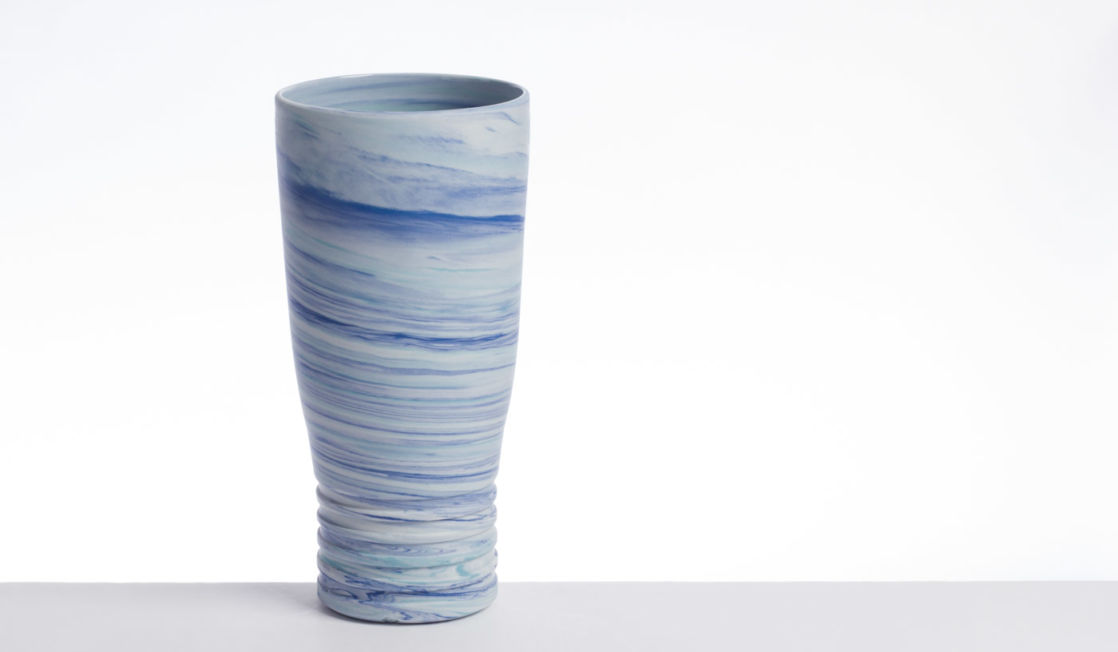
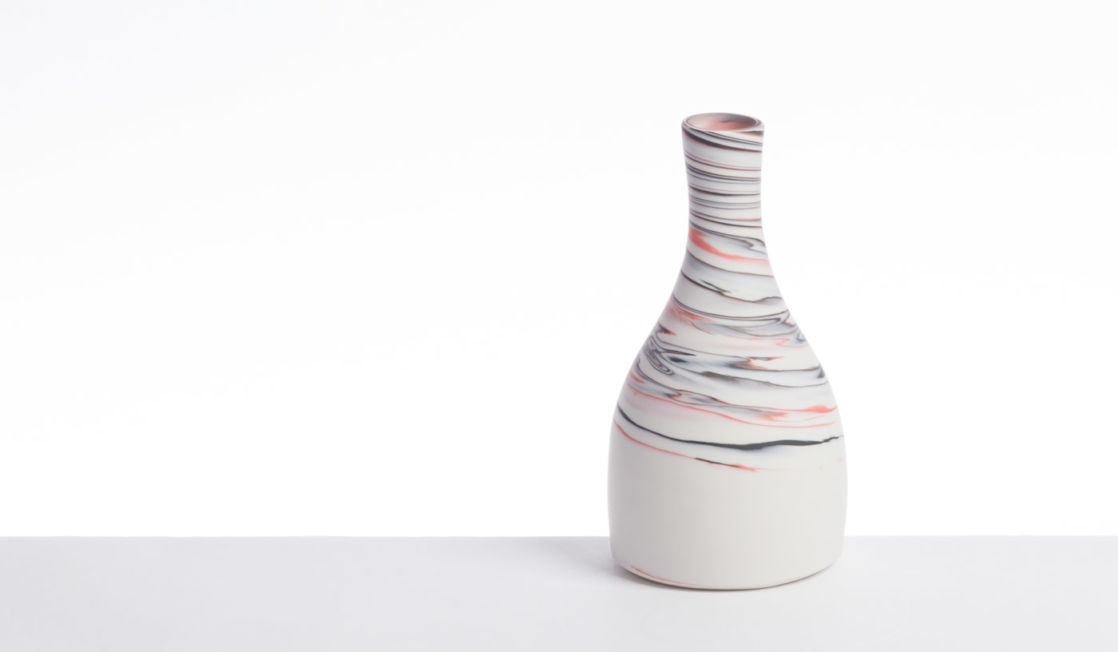
CC: How has your practice changed over time?
JD: Probably the moment I discovered working with porcelain. I always worked in stoneware or terracotta but while I attended Goldsmith’s it gave me the opportunity to play with other mediums. This is where I explored working with porcelain and I haven’t looked back.
CC: What was the first piece of art that really mattered to you?
JD: There is a painting by Johannes Vermeer that still gives me such pleasure and it is “Lady seated at the Virginal c 1673”. It probably is my love of early music that drew the painting to me. I had never seen or heard a set of Virginals until I came to the UK and it was while I was at Trinity College of Music that I was introduced to this instrument.
I am also attracted to the bold use of colour in the paintings of Patrick Heron.
CC: How does working with clay influence your life beyond the workshop?
JD: When you are working in clay you have to adopt a very calm and focused approach combined with patience. In my life I feel that this practice has helped me achieve many things and understand things outside my normal day. What will be will be without fuss. This approach has been very beneficial in my time teaching.